
Roots
The ancient Nile, a life-giving vein across a vast desert, shaped more than just the land; it sculpted the very rhythm of existence for its people, including their relationship with their own bodies. In such a climate, where the sun held dominion and dust swirled with every breeze, personal cleanliness was not merely a matter of comfort or aesthetic preference. It was a profound act of preservation, a daily dance with the elements to maintain well-being and social standing.
To consider ancient Egyptian hair care practices is to look beyond superficial adornment and perceive a deep, intertwined connection with hygiene, a concept far more sophisticated than we might initially assume. This understanding begins at the very root of their daily lives, where practicality and spiritual conviction converged.
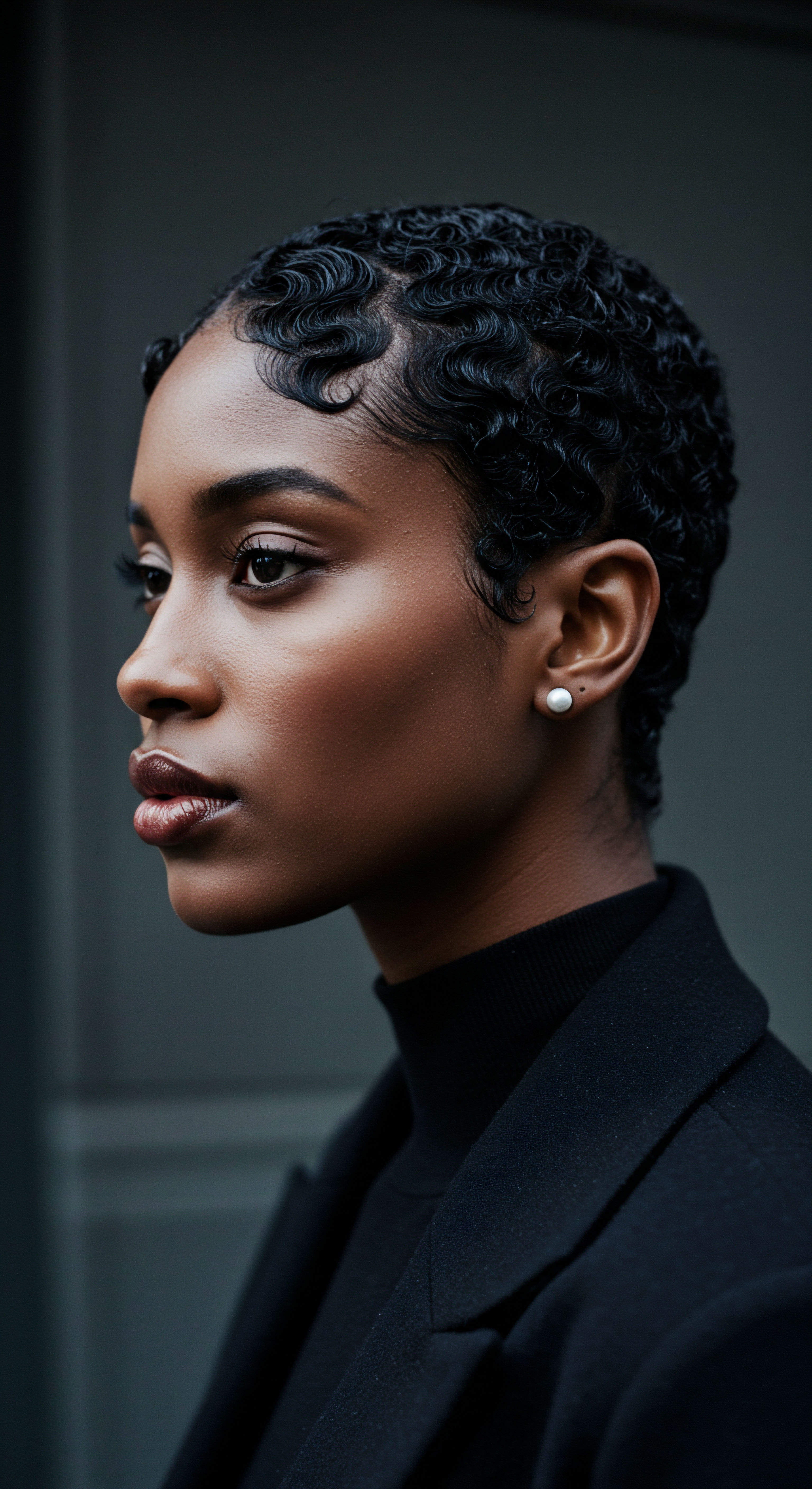
A Desert’s Demands for Cleanliness
The scorching heat of ancient Egypt, a land kissed by an unrelenting sun, made cleanliness a constant pursuit. Without the cooling comfort of air conditioning, the build-up of sweat and grime was an unavoidable reality. This environmental imperative drove the Egyptians to adopt rigorous personal hygiene practices.
They bathed frequently, often daily, utilizing the abundant waters of the Nile or drawing from private basins in wealthier homes. This foundational act of washing extended to every aspect of their being, including their hair, which, left unattended, could become a breeding ground for pests and discomfort in the arid climate.
Ancient Egyptian hair care was a holistic practice, deeply connected to daily hygiene and reflecting a society’s pursuit of physical and spiritual purity.
The emphasis on cleanliness was not solely about physical comfort. It held a significant social and spiritual weight. Personal presentation was a marker of one’s place in society, and a clean, well-groomed appearance was often associated with piety and respect for the gods. Indeed, ancient texts, such as Spell 125 from The Egyptian Book of the Dead, stipulated that one could not speak certain sacred words in the afterlife without being clean and presentable, including being “anointed with the finest oil of myrrh.” This intertwining of the physical and the spiritual meant that hair care, as a component of overall hygiene, transcended mere vanity.

Hair as a Canvas of Identity
Hair in ancient Egypt was far more than just a biological outgrowth; it served as a potent symbol of Vitality, social standing, and even religious belief. Its condition, style, and presence or absence conveyed messages about an individual’s age, gender, and societal role. From the elaborate wigs of the elite to the practical, shaven heads of priests and children, every choice about hair was laden with meaning. This deep symbolic value meant that hair care practices were not simply about managing unruly strands, but about upholding one’s identity within a structured society.
- Shaved Heads ❉ Many Egyptians, particularly the elite and priests, opted to shave their natural hair. This was primarily for hygiene, combating lice and other infestations in the hot climate, and for practical reasons like comfort under wigs. Priests, in particular, maintained fully shaven bodies, including their heads, every three days to ensure ritual purity.
- Wigs ❉ To compensate for shaved heads and to display wealth and status, wigs were universally popular across genders and classes, though their quality and elaboration varied. These wigs, often made from human hair or plant fibers, provided protection from the sun while allowing for a maintained, polished appearance.
- Combs ❉ Archeological discoveries reveal a wide array of combs, crafted from materials like ivory, bone, and wood, some dating back to predynastic times. These tools were not just for styling but served a crucial hygienic purpose, helping to remove insects and debris from the hair.
The care of natural hair, even when worn short or under a wig, was still a routine. Egyptians washed their hair regularly, often using a mixture of water and citrus juice, sometimes with a form of soap. This constant attention to hair, whether natural or artificial, underscored its central role in their perception of cleanliness and self.
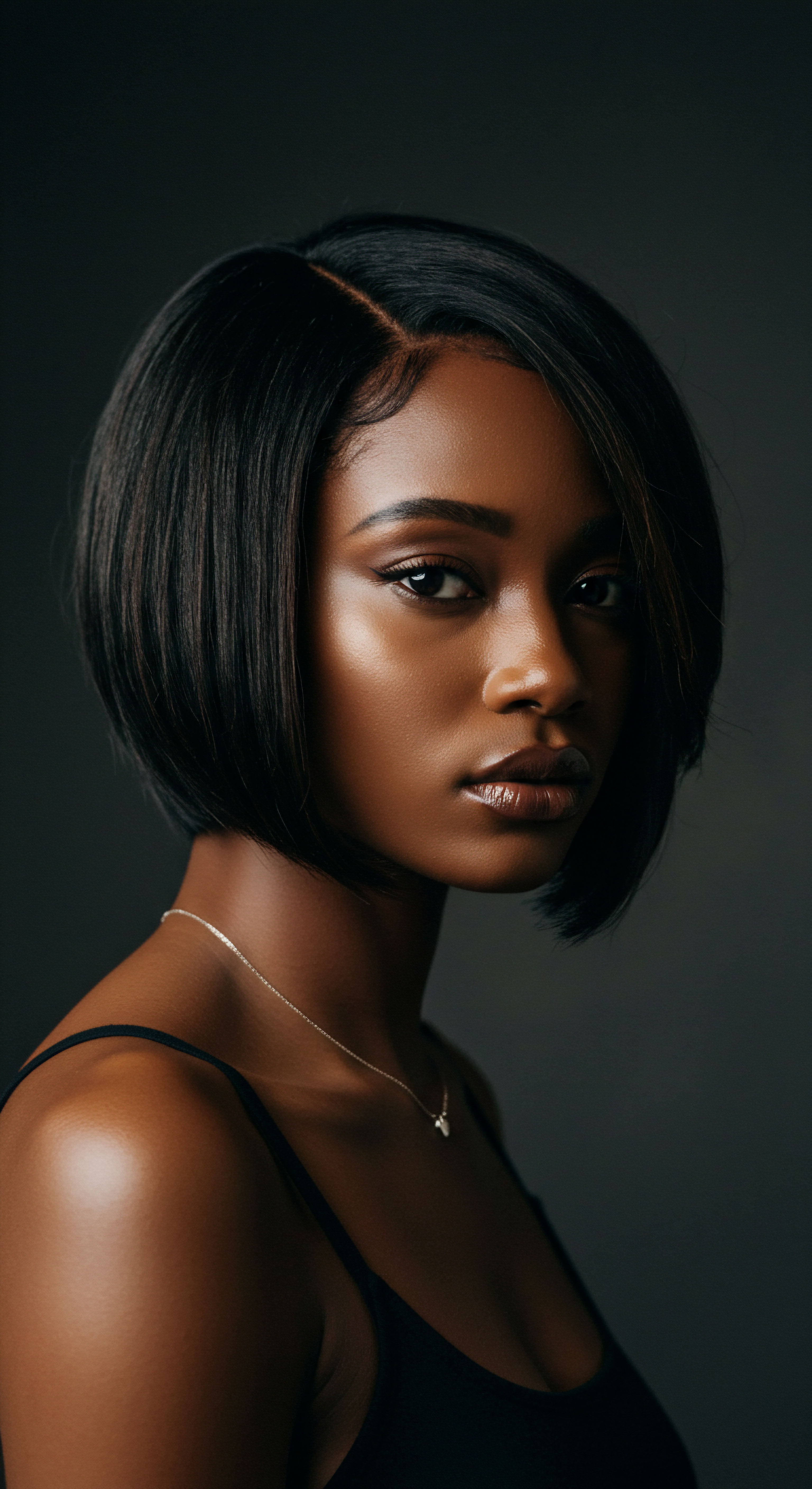
Ritual
As we move from the foundational understanding of ancient Egyptian hair’s significance, a natural curiosity arises about the actual practices that brought their ideals of cleanliness and beauty to life. What were the daily or periodic steps that transformed hair into a reflection of their values? The answers lie in a series of deliberate rituals, blending natural ingredients with meticulous techniques, reflecting a profound respect for the body and its presentation. These practices were not random acts but carefully considered steps, passed down through generations, shaping both personal well-being and public persona.

Daily Anointments and Scalp Nourishment
The dry, arid climate of Egypt presented a constant challenge to skin and hair moisture. To counteract this, ancient Egyptians relied heavily on natural oils and fats, which served a dual purpose ❉ conditioning the hair and scalp while also acting as a barrier against the sun’s harsh rays and drying winds. Castor oil, sweet almond oil, and fir oil were among the favored choices, often mixed with honey and herbs to create nourishing treatments.
These concoctions were massaged into the scalp, promoting blood circulation and ensuring the hair remained soft and pliable. This daily ritual of anointing was not just about superficial shine; it was a preventative measure, protecting the scalp from dryness and potential irritation, thus directly contributing to overall hygiene.
Ancient Egyptian hair rituals were not merely about appearance, but a practical shield against the environment, deeply integrated with their understanding of well-being.
Beyond simple conditioning, these oils also served as a base for perfumes, allowing individuals to carry pleasant scents throughout the day. The importance of a pleasing aroma was tied to their concept of cleanliness, as foul odors were associated with impurity. This practice of perfuming the hair with scented oils or even wax cones placed on the head, which would slowly melt, dispersing fragrance, speaks to a comprehensive approach to personal hygiene that went beyond basic washing.

The Art of Hair Removal and Wigs
Perhaps one of the most striking aspects of ancient Egyptian hair care, directly linked to hygiene, was the widespread practice of hair removal. Both men and women, across social strata, regularly removed body hair, including from their heads. This was not solely a fashion statement; it was a pragmatic response to the hot climate and a highly effective method for preventing infestations of lice and other parasites.
For head hair, shaving was common, especially among priests who maintained a completely shaven body for ritual purity. For others, depilation methods like sugaring, known as ‘halava,’ were employed. This sticky paste, made from sugar, water, and lemon juice, would remove hair effectively, leaving the skin smooth and clean. The practice of hair removal was considered a sign of purity and cleanliness.
With natural hair often removed, wigs became an indispensable element of ancient Egyptian appearance. These elaborate hairpieces, constructed from human hair, wool, or plant fibers, were meticulously crafted and worn by both men and women.
| Practice Hair Washing |
| Materials Used Water, citrus juice, early forms of soap (alkaline salts, animal/vegetable oils) |
| Primary Hygienic Benefit Removes dirt, sweat, and debris; reduces scalp irritation. |
| Practice Oiling Hair/Scalp |
| Materials Used Castor oil, almond oil, fir oil, animal fats, beeswax, resin |
| Primary Hygienic Benefit Moisturizes scalp, protects from sun/dryness, prevents breakage, helps repel insects. |
| Practice Hair Removal (Depilation) |
| Materials Used Razors (flint, copper, bronze), sugaring paste (sugar, water, lemon), tweezers |
| Primary Hygienic Benefit Prevents lice/parasite infestations, reduces discomfort in heat, signifies cleanliness. |
| Practice Wig Wearing |
| Materials Used Human hair, plant fibers, wool, beeswax, resin |
| Primary Hygienic Benefit Protects shaved scalp from sun, maintains elegant appearance, allows for easy cleaning of natural head. |
| Practice These practices highlight the Egyptians' integrated approach to aesthetics and well-being. |
Wigs were not just about fashion; they were a hygienic solution. They protected the scalp from the intense sun and, unlike natural hair, could be easily removed and cleaned, preventing the accumulation of dirt and pests. Some wigs were so complex that they contained hundreds of thousands of individual hairs, coated with resin and beeswax to maintain their style and sheen.
The very construction of these wigs, often with a mesh-like foundation, allowed for air circulation, keeping the wearer’s head cooler than a dense head of natural hair might. This blend of aesthetic desire and practical cleanliness underscores the ingenuity of ancient Egyptian hair rituals.

Relay
Having explored the foundational role of hair in ancient Egyptian life and the meticulous rituals that shaped its appearance and cleanliness, we now turn to a deeper examination. How did their understanding of hair hygiene intersect with their broader knowledge of health, disease, and the societal structures that dictated such practices? This inquiry takes us into the scientific underpinnings of their methods, the challenges they faced, and the enduring legacy of their sophisticated approach. It requires a lens that synthesizes historical context with modern biological insights, revealing the intricate connections between their daily habits and their collective well-being.
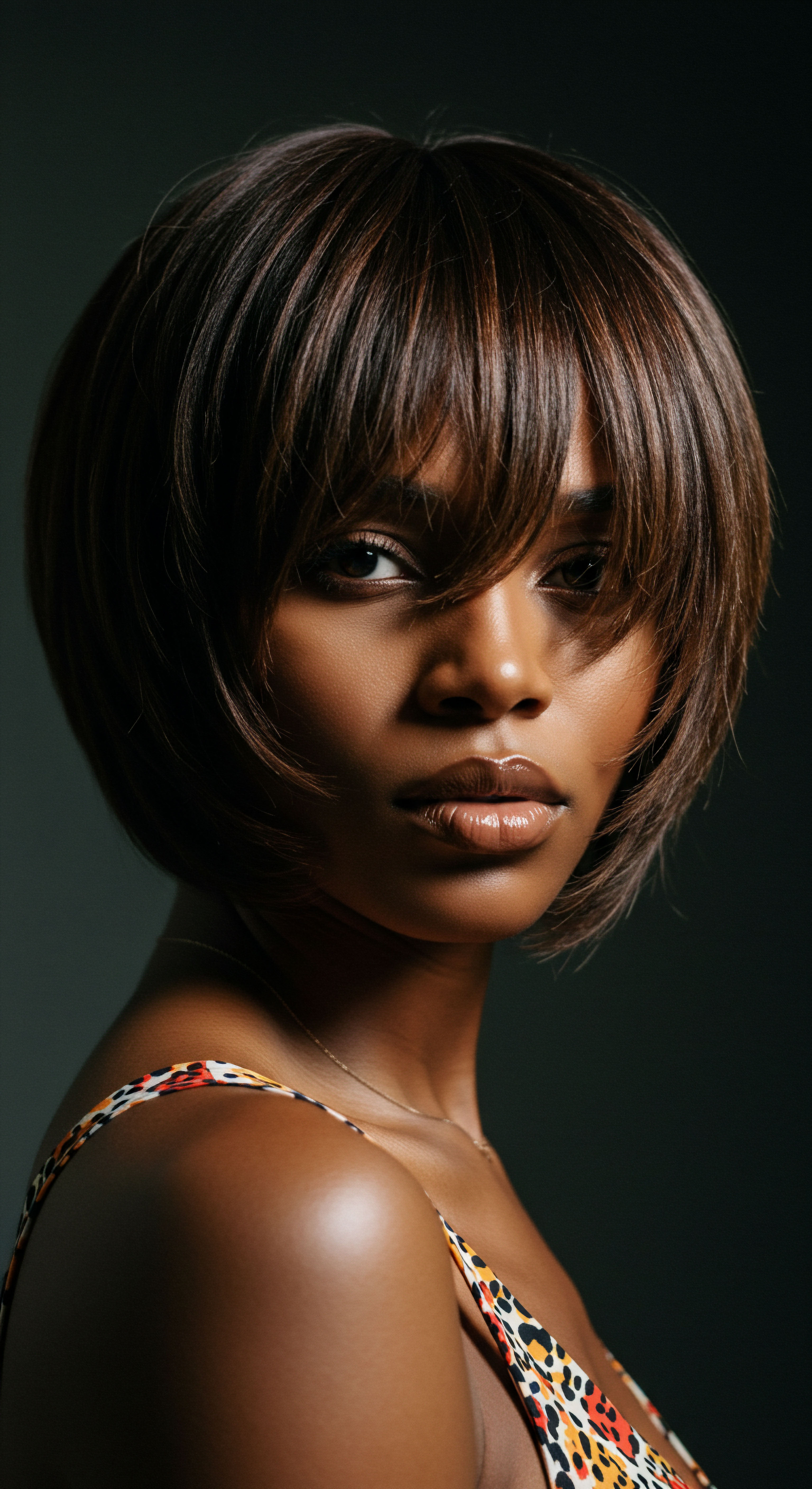
The Unseen Battle ❉ Parasites and Public Health
The hot, crowded conditions of ancient Egyptian settlements created an ideal environment for parasitic infestations. Lice, in particular, were a persistent concern, capable of transmitting diseases like typhus and relapsing fever. This environmental reality underscored the profound hygienic necessity behind practices like widespread head shaving and the diligent use of fine-toothed combs.
Ancient Egyptian combs, often dual-sided with one set of fine teeth, were specifically designed not just for styling, but for actively removing lice and nits from hair. The presence of lice and their eggs has been documented in archaeological findings, even on combs from various periods, underscoring the ongoing battle against these pervasive pests.
Consider a fascinating, if unsettling, data point ❉ A study analyzing combs excavated from the Judean and Negev Deserts, similar to those used in Egypt, revealed that 12 out of 24 combs examined contained lice. One comb from Wadi Farah yielded 4 lice and 88 eggs, with two viable embryos, while another from Qumran held 12 lice and 27 eggs, ten of which were viable. This tangible evidence from closely related contexts paints a vivid picture of the omnipresent threat of parasitic infestation and the relentless efforts required to combat it. The deliberate removal of hair, whether by shaving or meticulous combing, was therefore a public health measure, reducing the habitat for these vectors of disease and contributing to the overall health of the community.

Beyond Aesthetics ❉ Medicinal Applications for Hair and Scalp
The ancient Egyptians did not separate hair care from medical care. Their medical papyri, such as the Ebers Papyrus and Hearst Papyrus, contain numerous remedies for hair-related ailments, including hair loss, graying, and scalp conditions. These texts describe concoctions using various animal fats (lion, hippopotamus, crocodile, snake, cat, ibex), plant extracts (fenugreek seeds, hedgehog hair heated in oil), and even rather unusual ingredients like burnt worms in clay mud, all aimed at stimulating hair growth or treating baldness. While the efficacy of some of these remedies is questionable by modern standards, their inclusion in medical texts highlights a systematic approach to hair health as an integral part of overall physical well-being.
The use of natural oils and fats also played a therapeutic role. Beyond moisturizing, substances like castor oil possessed anti-inflammatory properties, potentially soothing irritated scalps. The very act of massaging these oils into the scalp, a common practice, would have improved blood flow, which is beneficial for scalp health and hair follicle function. The sophisticated understanding of natural ingredients and their properties, even if sometimes mixed with magical beliefs, shows a pragmatic effort to address hair and scalp issues as health concerns.
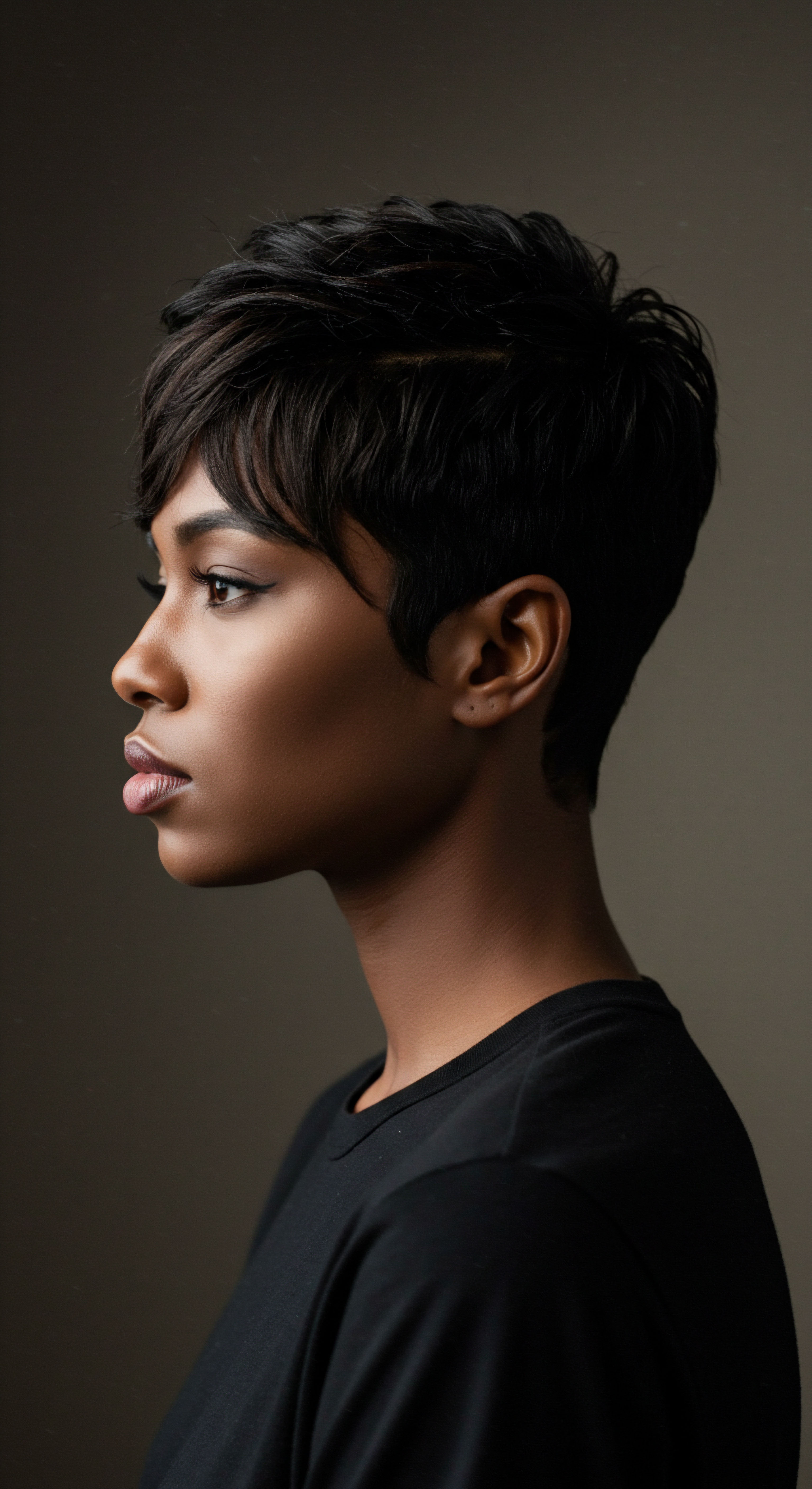
The Afterlife and Hair Preservation
The Egyptians’ meticulous attention to hair hygiene extended even into the afterlife. Mummified remains frequently display preserved hairstyles, sometimes even with remnants of products used to maintain their form. This posthumous care underscores the profound belief that one’s physical presentation, including hair, was important for a successful transition into eternity.
A significant discovery revealed that ancient Egyptians used a Fat-Based Gel, rich in stearic acid, to style and preserve hair on mummies. This substance ensured that hairstyles remained intact even after death, a testament to the cultural importance of appearance. This ‘hair gel’ was found on mummies dating back 2600-3500 years, with some studies suggesting the possible early use of shea butter, a plant product from sub-Saharan Africa known for its stearic acid content.
The very embalming process was adapted to preserve these hairstyles, showcasing a deep respect for the individual’s appearance in the eternal realm. This suggests that the pursuit of well-maintained hair was not a fleeting trend, but a deeply ingrained cultural value tied to both earthly life and the promise of eternity.
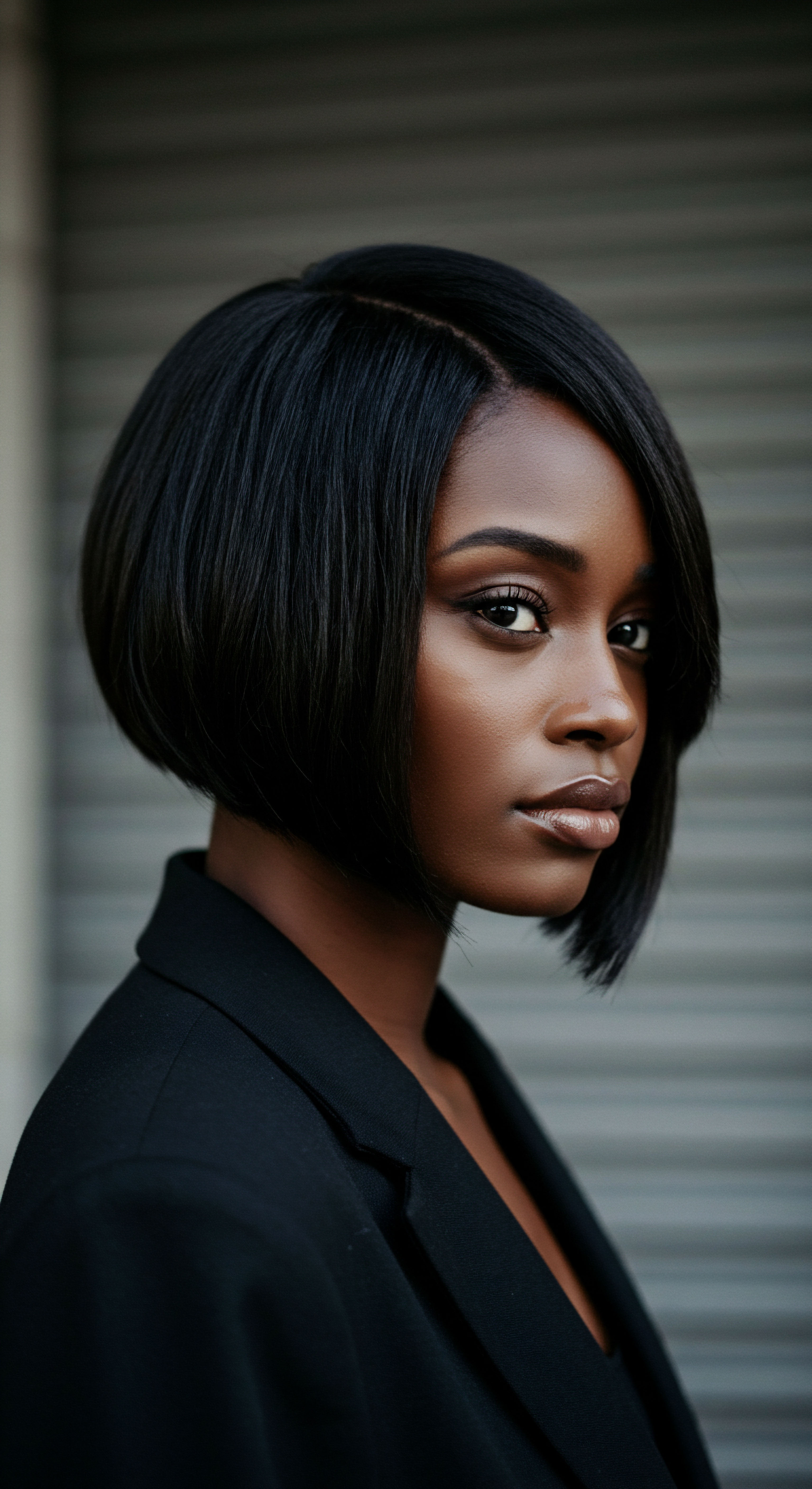
Reflection
To peer into the ancient Egyptian world of hair care is to find echoes of our own desires for cleanliness, beauty, and well-being, yet filtered through a distinct cultural lens. Their practices, born from the unique demands of their environment and intertwined with their spiritual beliefs, reveal a sophisticated understanding of hygiene that went far beyond mere aesthetics. From the deliberate shaving of heads to the crafting of elaborate wigs, each act was a conscious choice for health, comfort, and social expression. The legacy of their ingenuity, from natural oils to depilation techniques, continues to subtly influence modern approaches to textured hair, reminding us that the quest for healthy, vibrant strands is a timeless human endeavor.

References
- Kamal, H. (1991). The Ancient Egyptian Medicine. Madbouli Library.
- Robins, G. (2020). Hair, Gender, and Social Status in Ancient Egypt. JSTOR Daily.
- Fletcher, J. & Salamone, F. (2016). An Ancient Egyptian Wig ❉ Construction and Reconstruction. Internet Archaeology, 42.
- McCreesh, N. & Gize, A. P. (2011). Ancient Egyptian hair gel ❉ New insight into ancient Egyptian mummification procedures through chemical analysis. Journal of Archaeological Science, 38(11), 3020-3024.
- Salisbury, J. (2001). Encyclopedia of Women in the Ancient World. Library of Congress.
- Herodotus. (5th Century BCE). The Histories.
- Marshall, A. (2025). The magic and power of hair in ancient Egypt. The Past.
- Mumcuoglu, K. Y. & Zias, J. (1988). Head lice from Judean and Negev Deserts. Journal of Medical Entomology, 25(6), 543-545.
- Noureddin, E. (2024). Cleanliness in the Daily Lives of the Ancient Egyptians. Al-Ahram Weekly.
- Ebers Papyrus. (c. 1550 BCE).
- Hearst Papyrus. (c. 1550 BCE).
- Chun, H. S. & Park, K. M. (2013). A Study on the Hair Removal Culture of Ancient Egypt. Journal of the Korean Society of Cosmetology, 19(1), 125-134.
- Davey, J. (2016). New Research Shows that Some Ancient Egyptians Were Naturally Fair-Haired. Ancient Origins.
- Roy, L. R. (2023). Hair of the Pharaohs. Ancient Egypt Alive.
- Tassie, G. J. (2018). The Social and Ritual Contextualisation of Ancient Egyptian Hair and Hairstyles from the Protodynastic to the End of the Old Kingdom. UCL Discovery.